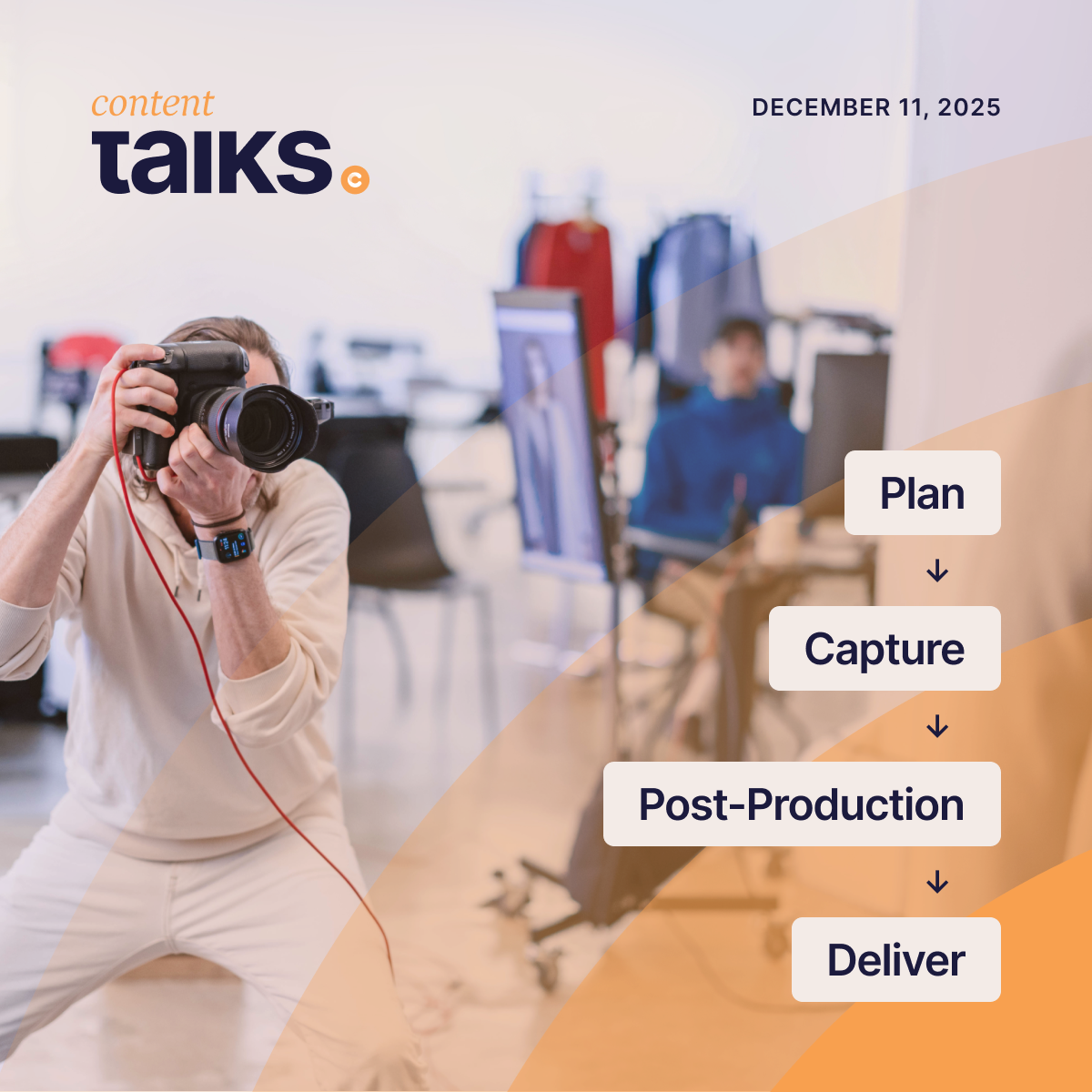How Much Are "In Stock, Not Live" Products Costing eCommerce Retailers?

To preface this for those who have worked in a large eCommerce retailer, you most likely know the bulk of what we'll talk about below. You're inundated with it every week (if not every day).
By all means, forge ahead if you're looking for a recap, but for the rest of our readers, buckle up, there's so much more happening behind eCommerce studio doors than you might think.
What is “In Stock, Not Live”?
Simply put, it’s the percentage of products that are available for a retailer to sell but are not published on their website. This is typically due to content not being available (i.e. images, video, copy). A product page can't be built if they don't have the content to fill it. It's an extremely important KPI that we’ve touched on in the past. Depending on the size of the retailer, studio, etc, this number could range anywhere from a few items to thousands of them.
Now, if you’re on the lower end of the spectrum (only having a few items that are sellable and not available), it’s probably not a massive issue. But if you have thousands of items, you’re losing money. Possibly thousands, if not hundreds of thousands, of dollars.
eCommerce Shoot Optimization
While everyone has their own nuanced way of approaching content creation, there are some typical rules to follow when you're looking to optimize your eCommerce shoots. And it's important to know that it's not just about cost.
Building an inspirational "look" for customers is important for retailers and studios alike. When multiple retailers sell the same products, it's necessary to give shoppers a reason to purchase from retailer x over y. In many cases, this could be due to price, but in others, it's from the inspirational images created allowing shoppers to visualize themselves in the outfits or with the products photographed. There's a lot of time and energy put into creating the beautiful images and outfits we see across eCommerce every day.
That being said, it can also be about cost.
One of the most expensive productions is an on-model shoot. For this kind of production, you'll need to hire a team including photographers, models, make-up, lighting, and everything in between. After planning, let's pretend that your style guide identifies that 50 products per shoot are an optimal balance for quality vs. cost per product. Before the stock arrives, you prepare. You want to make sure that you're keeping the cost per shot low and creating aesthetically pleasing designs. This is important if you plan to shoot a shirt, sweatshirt, and pants, for example. It would be great if you were selling all three items instead of using a prop shirt under the sweatshirt. In the pursuit of the ideal production, studios will delay shooting while they build the optimal 50 products.
This is all in good practice until it's not.
If you're doing this in advance of having the stock to sell, it's a great way to work. However, let's say hypothetically that your team only has 35 items ready to photograph, but in the warehouse sits $5 million worth of those products. Does it make sense to wait to shoot because your cost per shot goes up?
Reasons for "In Stock, Not Live" Product Photography
There are a plethora of reasons why something might not be in stock and not live, but these are the 4 main attractions. If you know of any others that aren't included, we'd love to hear them.
The Studio, Copy, or Web Teams Don't Have Limitless Capacity
This is a simple one. If you have a large influx of in-stock products, there are most likely going to be delays due to teams needing time to get it all done. On the studio team, it all needs to be shot. On the copy team, they can't move forward without images. On the web team, they can't create the pages without everything else.
The Studio Doesn't Have the Samples (or often, don't know that they do)
This might be surprising to some readers but to many studios, they can have products in stock, but no sample to shoot in studio. Studios get shipments constantly, meaning things can slip through the cracks. If they don't have the samples or they're not aware that they have the samples (in storage or in the studio), they can't put them into the workflow.
The Studio Isn't Aware of What's Urgent (or Where It Is)
In some cases, there are a lot of products, and the studio isn't aware of which products are urgent or where they are in the process. A studio could have thousands of product X, and be shooting products A, B, and C, simply because they have them in hand.
Equally, finding and prioritizing imagery already in progress for urgent products is almost impossible without an advanced system.
Copywriting Can't Be Done Without Imagery or Sample
Simply put, if writers don't work on set, with the products, or have images to base copy on, their copy can't be written or go live on the website until the web-ready images are delivered.
Where Do Retailers Lose Money?
1. Storage Costs
When products are "in stock, not live," they still need to be stored in a warehouse or fulfillment center. This can lead to increased storage costs, especially if a delay in publishing the product photos is prolonged. In some cases, retailers may be charged additional fees for storing products that aren't generating sales. The longer the storage, the more money is lost.
2. Missed Sales Opportunities
Perhaps the most significant cost associated with all of this is the potential loss of sales opportunities. When customers can't view or purchase a product because the images haven't been published, retailers are missing out on potential revenue. This can be particularly problematic if the products in question are seasonal or time-sensitive (think Black Friday), as the window for sales may be limited.
3. Less Time at Full Price
Simply put, if seasonality is important for a product, and the images are late, it means that that product is going to spend less time at full price and more time in markdown. Seasonality is very important in some fashion, and if you miss the window, you miss the opportunity, which means you miss the money.
The Solve?
The way to resolve "in stock, not live" involves a lot of moving pieces, and most of those moving pieces involve the D-word.
Data.
Creative Force can utilize data to show users what's important, where samples are in the journey, and make sure that those samples/products continuously move to completion.
Creative Force Solves:
- Teams Don't Have Limitless Capacity
- Creative Force helps studios do more with the time they have, meaning their capacity grows, without their studio needing to.
- Clear visibility of upcoming demand and launch deadlines, allowing the studio to proactively address capacity issues.
- Studio Doesn't Have the Samples
- Creative Force shows what samples are available (and missing), where they are located, and organizes them into the workflow.
- Studio Doesn't Know What's Urgent
- Creative Force integrates well with other systems and can ingest live stock information. This becomes actionable data, allowing the studio to easily prioritize urgent products.
- Copywriting Can't Be Done Without Imagery
- Instead of waiting for final images, copywriters can receive earlier shots and get started on copywriting, working in parallel with studio production instead of waiting for web-ready image delivery.
Wrap-Up
eCommerce retailers should prioritize efficient workflows and communication among departments to avoid the financial losses and risks associated with "in stock, not live" product photography. By addressing the root causes of the "in stock, not live" phenomenon and taking steps to minimize delays, eCommerce retailers can reduce hidden costs, improve customer satisfaction, and maximize their sales potential. If that all sounds ideal to you, then Creative Force might just be the solution you're looking for.








